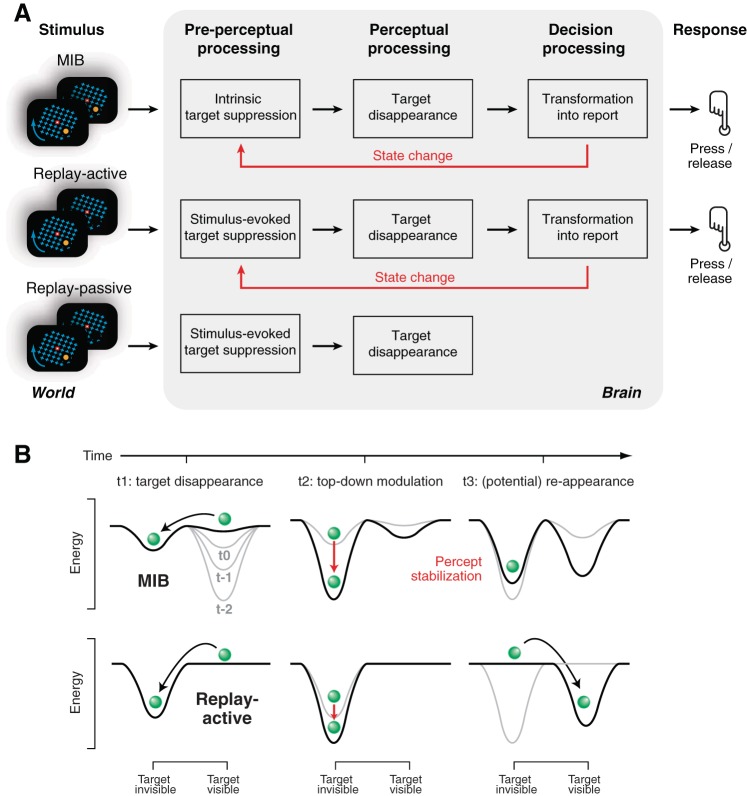Fig. 8.
Conceptual model of beta-power transient. A: schematic of the hypothetical process driving the report-related beta-band modulation in visual cortex. During MIB, Replay-active, and Replay-passive, the cortical representation of the target is suppressed, leading to the target's disappearance. The suppression occurs either spontaneously (i.e., due to intrinsic cortical processing in MIB) or in response to the physical target offset (Replay). If the perceptual disappearance is task-relevant (MIB and Replay-active, but not Replay-passive), a central decision process transforms it into a behavioral report. This transformation induces the top-down modulation in visual cortex. The top-down modulation, in turn, alters the state of visual cortex and, hence, the target representation. B: schematic of dynamical algorithm for cortical state change and perceptual stabilization. In both MIB (top) and Replay-active (bottom), the percept (green “ball”) is in the “target visible” valley. Adaption gradually flattens this valley before target disappearance (sequence: t−2, t−1, t0). The ball then hops into the “target invisible” valley (perceptual switch, t1). Behavioral report of this perceptual event induces a state change that deepens the target invisible valley (t2; red arrows). This, in turn, stabilizes perception during MIB (t3, top right): When the state change is strong, the percept variable is less likely to move back to the visible valley some time after the switch (t3). By contrast, during Replay (t3, bottom right), the physical target reappearance alters the energy landscape (i.e., eliminates the target invisible valley) and thereby prevents the state change at t2 from affecting the percept duration.

